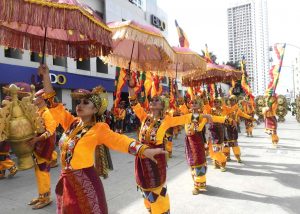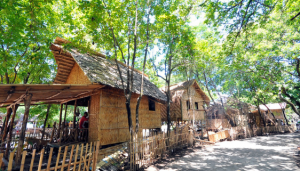 DAVAO CITY (MindaNews) – Davao City, which has been topping the number of COVID-19 cases nationwide for several weeks now, recorded 732 new COVID-19 cases and 38 deaths in the first nine days of 2021, or 1,088 cases and 67 deaths in 16 days from December 25 to January 9, according to data from the Department of Health regional office.
DAVAO CITY (MindaNews) – Davao City, which has been topping the number of COVID-19 cases nationwide for several weeks now, recorded 732 new COVID-19 cases and 38 deaths in the first nine days of 2021, or 1,088 cases and 67 deaths in 16 days from December 25 to January 9, according to data from the Department of Health regional office.
DOH records from last year show that it took the city four months in 2020 to log 732 cases, the figure reached in only nine days in 2021.
Dr. Ashley Lopez, the city’s COVID-19 focal person, attributes the surge to holiday gatherings including Christmas and New Year parties, family reunions, shopping and Misa de Gallo masses.
But Lopez told MindaNews that they are not recommending a change to a more restrictive quarantine status. The city reverted to General Community Quarantine (GCQ) from Modified GCQ on November 20 last year, supposedly to control the spread of the highly-contagious disease. A week before that, Davao City’s medical associations and hospital directors appealed for a two-week lockdown or Enhanced Community Quarantine (ECQ) which was turned down in favor of a GCQ.
At the start of the GCQ on November 20, the city had only 5,607 cases and 248 deaths. By January 9, the number had risen to 9,557 or 3,950 more cases and 196 more deaths.
Of 9,557 cases, 1,253 are active (13.1%), 7,860 are recoveries (82.2%) and 444 are deaths (4.6%.)
From 8,469 on December 25, the COVID-19 cases went up to 8,825 on January 1, 8,908 on January 2 and 8,951 on January 3. It rose to 9,055 on the 4th of January, 9,107 on the 5th and 9,194 on the 6th. By January 7, it increased to 9,325, then 9,404 on January 8 and 9,577 on January 9. A total of 153 new cases were recorded on January 9.
Within the Davao region, Davao City accounted for the highest number of cases as of January 9 with 9,557 or 69.7% out of the regional total of 13,696.
Never ECQ
Asked what measures he was recommending to address the alarming situation, Lopez replied: “intensify tri-media info campaign particularly on minimum health standards and other mitigating measures, increase surveillance and case-finding, optimize contact tracing, put up more swabbing areas and testing centers (Molecular lab), increase isolation and quarantine facilities, intensify border control including airport for locally stranded individuals, travel restrictions, etc.”
On December 12, when COVID-19 cases continued to surge three weeks since the reversion to GCQ and Lopez was asked if he would recommend a more restrictive quarantine, he told MindaNews: “never na ta mag-revert to ECQ. (We will never revert to ECQ). We will maintain GCQ until such time we will control COVID cases in Davao City.”
On Saturday, he did not reply directly to the question if he would recommend a change in quarantine status, saying instead that the national Inter-Agency Task Force on the Management of Emerging Infectious Diseases (IATF) “through its risk assessment tool identifies and classifies areas.”
The city’s GCQ status, initially until November 30 only, was extended until December 31 and was extended anew until January 31.
When MindaNews asked him again if he would recommend a change in quarantine status, he replied: “No.”
“We just have to provide constant reminders. This is what happens when we open up economic activities. It’s unavoidable people go out. Be consistent lang with our minimum public health standards sana to avoid further transmissions. ECQ or MECQ are temporary, not sustainable. Reiterate lang sana individual responsibilities especially social distancing,” he said on Sunday.
Contact tracing
In the November 18, 2020 meeting between the National Task Force on COVID-19’s CODE (Coordinated Operations to Defeat Epidemic) Team, and the Regional IATF and Regional Task Force on COVID-19 here in Davao City, a presentation on the “Results on the Implementation of the Composite Measures for Essential LGU Roles for COVID-19 Response” showed that Davao City, which accounted for 5,412 cases or 69.6% of the regional total of 7,779 that day, recorded the lowest percentage in the region at 17%, on tracing close contacts of new positive cases within 24 hours.
Davao Oriental’s record was 90.96%, Davao del Norte’s was 89%, Davao de Oro at 56.76%, Davao Oriental at 41% and Davao City at 17%. The Davao del Sur percentage was not indicated.
MindaNews asked Lopez what the city’s percentage rating is now in terms of tracing close contacts of new positive cases within 24 hours, citing the dismal 17% record in November.
He replied that the city now has “better contact tracing” because “our ratio now is 1:7 and the ideal is 1:8,” that contact tracing is now “more efficient and faster” and that their target is “100% within 48 hours.”
In November, the case to close contact ratio was 1:6 for Davao City; 1:8 for Davao Occidental; 1:10 for Davao del Norte and Davao del Sur; 1:15 for Davao Oriental; and 1:21 for Davao de Oro.
He said the contracts for the contact tracers hired by the Department of Interior and Local Government expired on December 31 “but (they) will be absorbed” by the city government.
Asked how many contact tracers the city has, Lopez replied: “1,200 more or less.”
On the surge in COVID-19 deaths, Lopez explained that 95% per cent of these deaths were “hospital deaths due to age – mostly 65 years old and above, with co-morbidities” such as like IHD/CHF (ischemic heart disease / congestive heart failure), post-stroke, CKD (chronic kidney disease), cancers and other clinical risk factors.” (Carolyn O. Arguillas / MindaNews)



